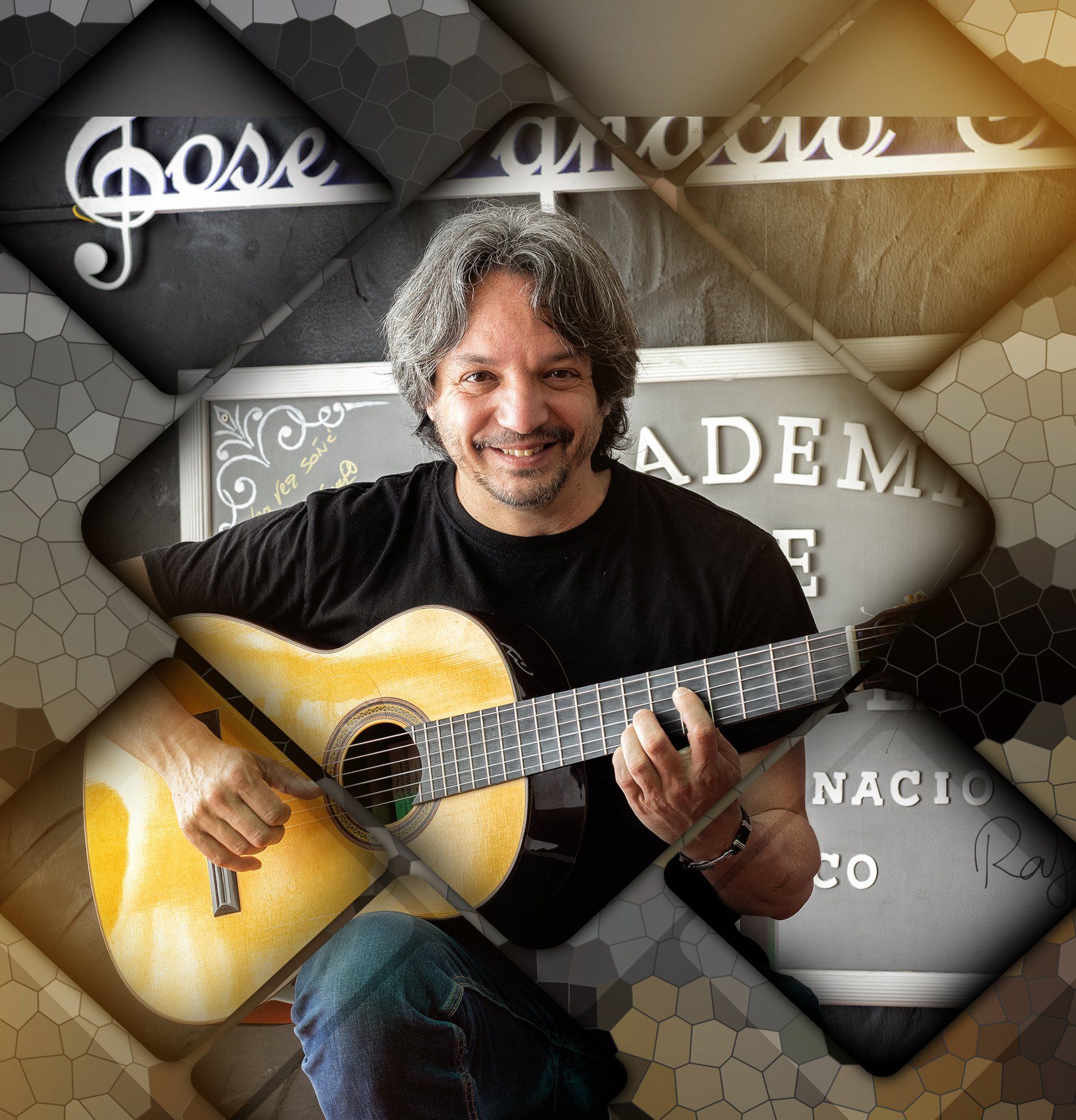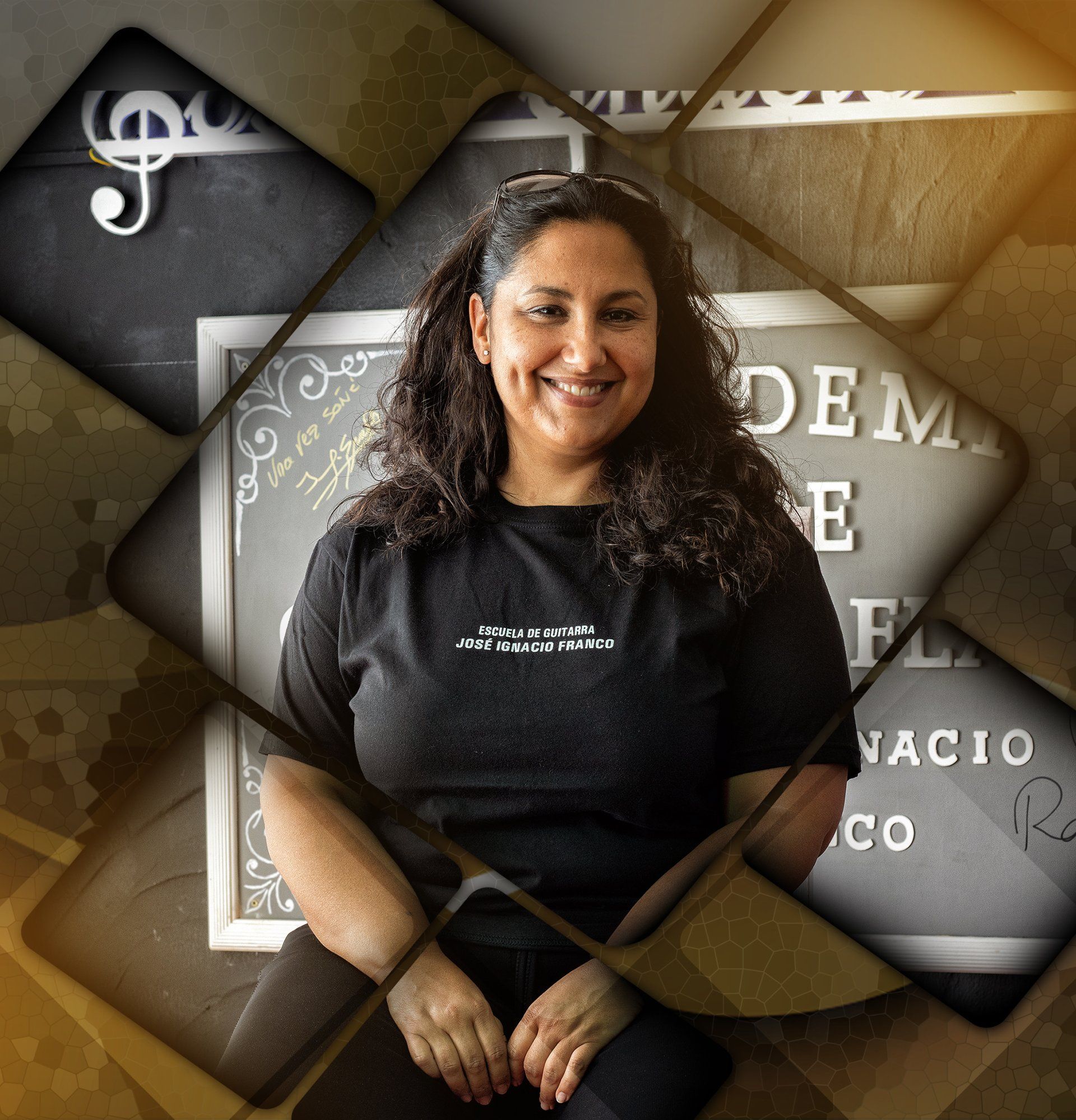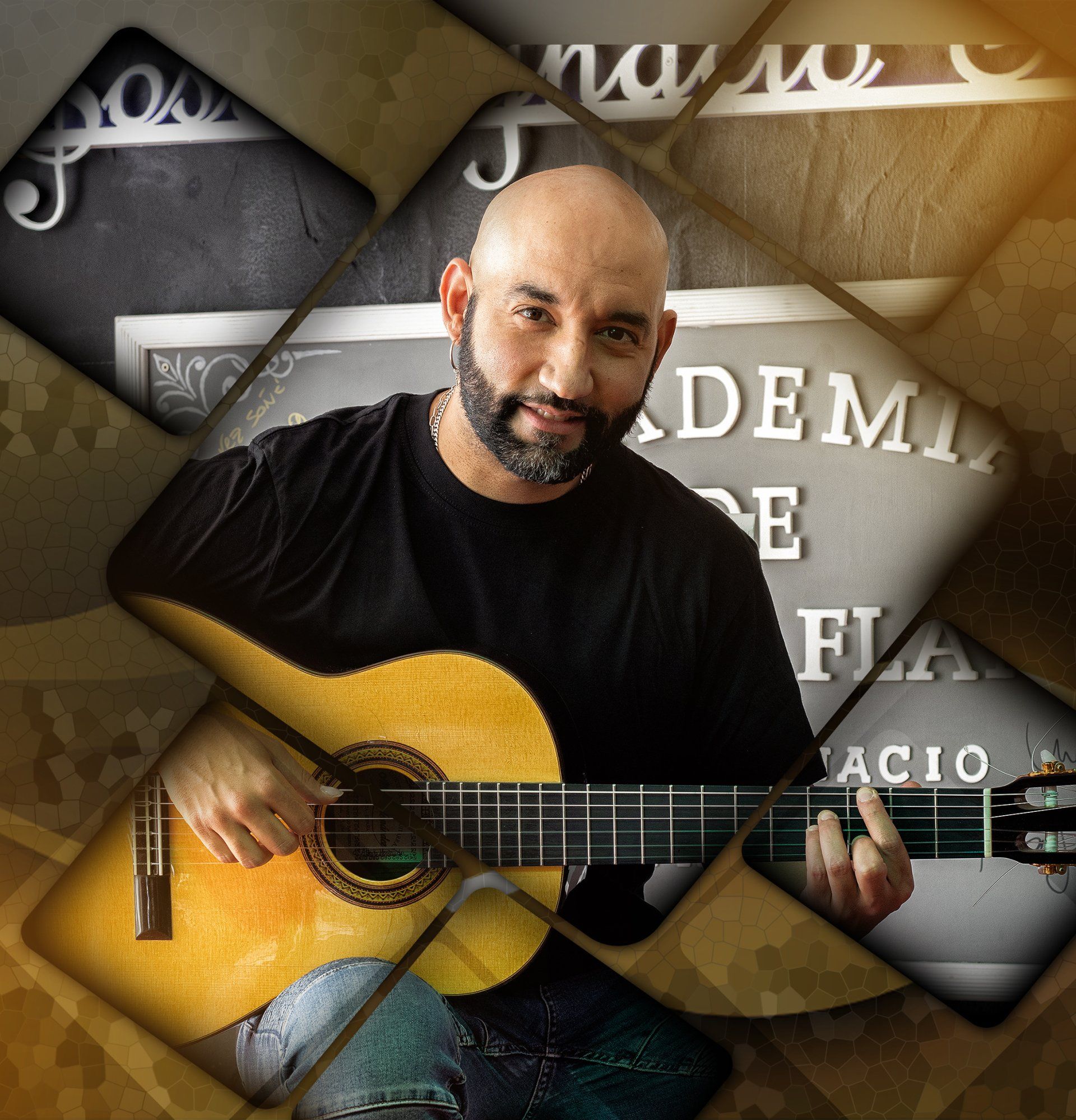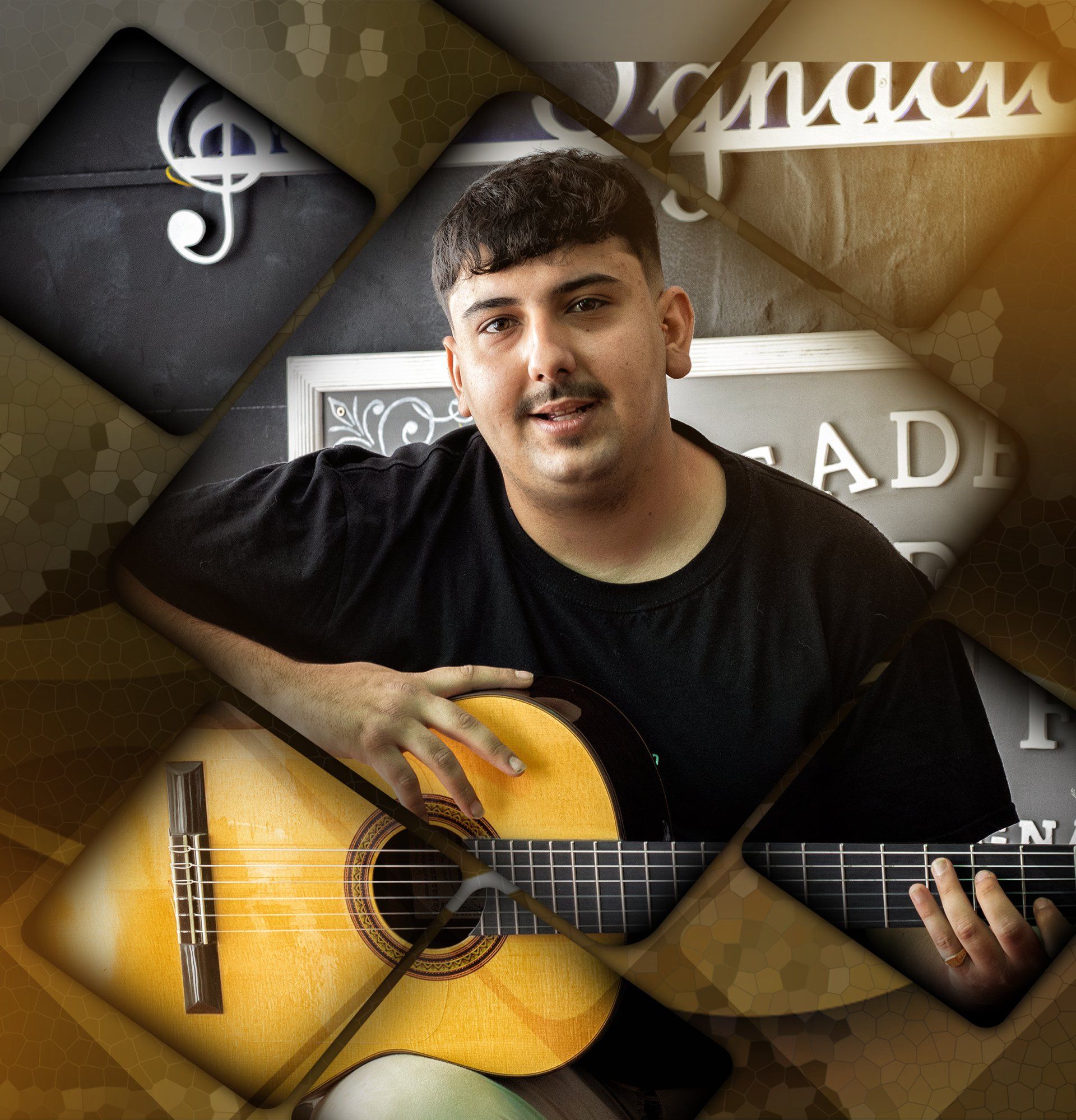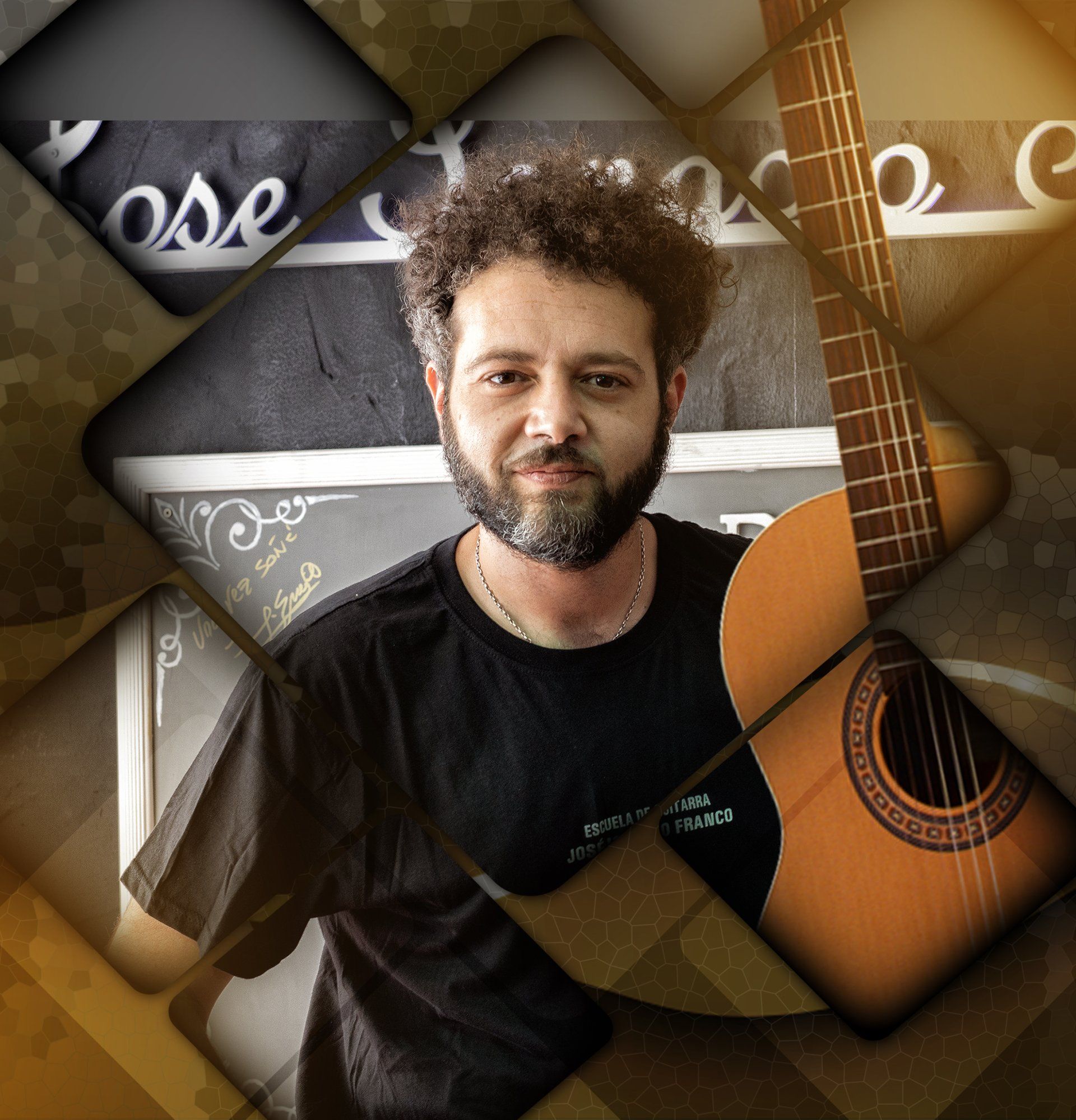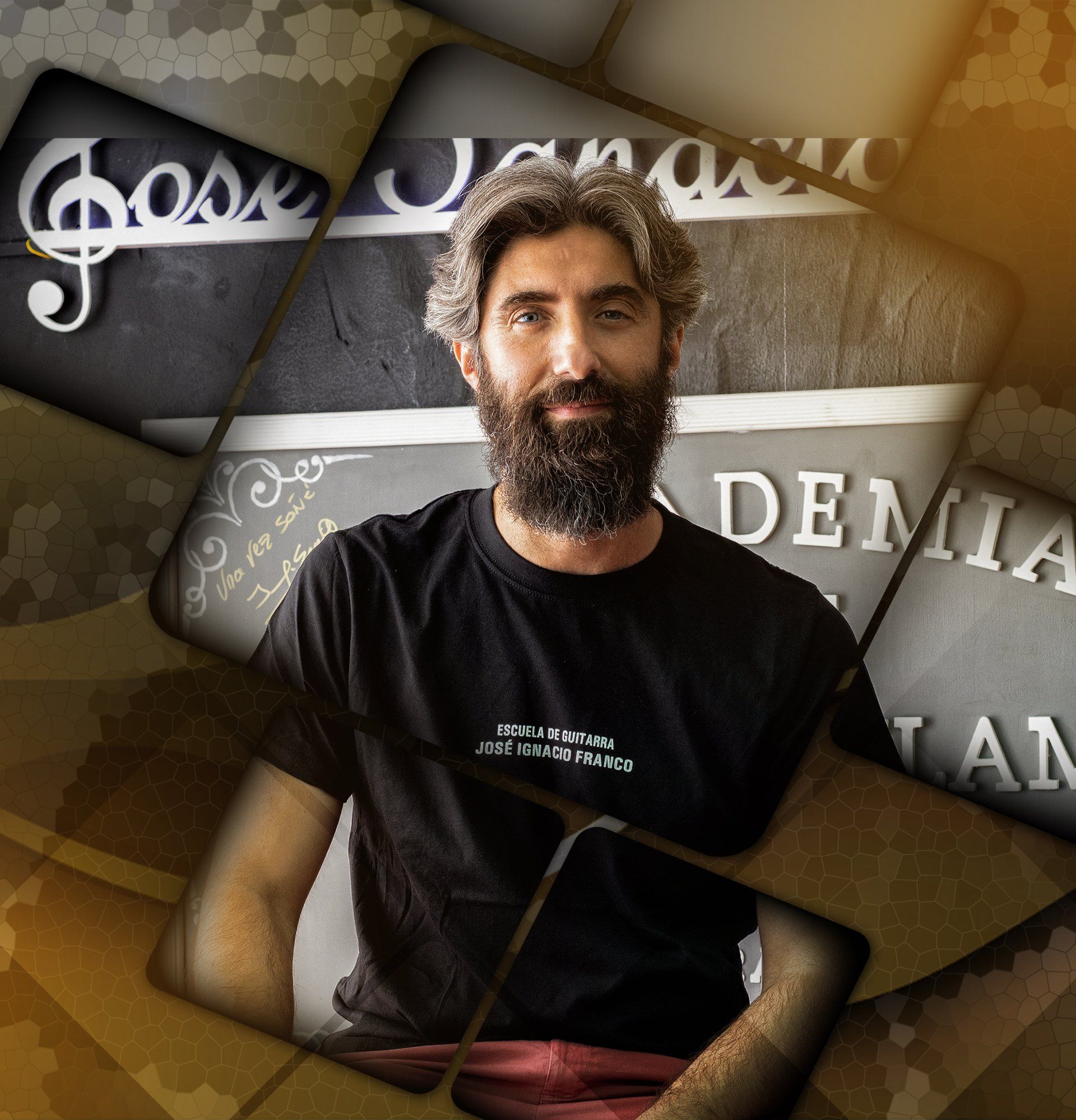Teachers
In our guitar school we have created a team of Teachers working together with all our students, so that we can get an idea of how our new project works, already underway since 2020.
Since I started teaching guitar (24 years ago) very young at 18, having this concern, I always had the dream of creating a guitar school where there would be several Masters and each one would dedicate themselves to a special signature since the guitar encompasses several essential ramifications.
For this I have worked intensely for several years and doing tests. Thanks to this work, a team of Teachers is already in place where each one has their own subject, each one of them are specialists in that branch.
Our students will be able to learn with all the Teachers for a single fee, something that I personally had never known in any school. In other words, it is something NEW AND UNIQUE in the world of learning flamenco guitar.
Everything always taught by the team of Teachers is organized and has a bond so that the work has its effect. Everything is thought out and organized. Now I am going to give you a little detail about each Master that we have in our team.
• José Ignacio franco
school founder
I started at the age of 10 to study the guitar with the great masters of Jerez de la Frontera such as El Carbonero, José Luis Balao, Moraito, Paco Cepero, Parrilla, Niño Jero, Antonio Jero ... Since then and nowadays thanks to the development and the extensive musical training that he has received during his career, is today one of the most sought-after guitarists on the flamenco scene.
I have accompanied the greatest figures such as Paco Cepero, being his second guitar on stage for 6 years and doing a world tour with him, and Capullo de Jerez, whom he accompanied for 7 years as official guitarist and performing in the best and most important flamenco theaters and festivals. I have also worked with other great artists such as Luis El Zambo, Fernando La Morena, Agudamientos, Tía Juana del Pipa, Luis de la Pica, El Torta, María José Santiago ...
From a very young age with only 18 years I had the vocation to teach and teach what I knew. I started at home and went through some areas of Jerez de la Frontera training in different places as a flamenco guitar teacher, until today I am living a dream that has come true, a flamenco school with six teachers, three of them. guitar, each one specialized in a branch of the guitar such as dance accompaniment, cante and soloist or avant-garde playing ...
"I am living a dream that has come true"
"Harmony and Improvisation"
Diego Well the Mouse
Among the hypotheses that are handled, one of them affirms that it was the Romans who were responsible for the arrival of the guitar in Spain, in the year 400. However, the current that has the most force maintains that it was the Arabs during the Muslim conquest of the Iberian Peninsula, when they introduced the lute, which is considered the first instrument with a neck. This also has an etymological basis, derived from the Arabic word qīṯārah.
On the other, the Latin guitar, with a flat bottom and whose pegbox is similar to that of the violin. The latter evolved and gave rise to two different instruments: the vihuela, with six double strings and very widespread among troubadours and professional musicians; and the guitar, with four double strings, whose use became popular.
"Teacher of Cante"
Felipa del Moreno
Among the hypotheses that are handled, one of them affirms that it was the Romans who were responsible for the arrival of the guitar in Spain, in the year 400. However, the current that has the most force maintains that it was the Arabs during the Muslim conquest of the Iberian Peninsula, when they introduced the lute, which is considered the first instrument with a neck. This also has an etymological basis, derived from the Arabic word qīṯārah.
On the other, the Latin guitar, with a flat bottom and whose pegbox is similar to that of the violin. The latter evolved and gave rise to two different instruments: the vihuela, with six double strings and very widespread among troubadours and professional musicians; and the guitar, with four double strings, whose use became popular.
"Modern Flamenco"
Fernando Carrasco placeholder image
Among the hypotheses that are handled, one of them affirms that it was the Romans who were responsible for the arrival of the guitar in Spain, in the year 400. However, the current that has the most force maintains that it was the Arabs during the Muslim conquest of the Iberian Peninsula, when they introduced the lute, which is considered the first instrument with a neck. This also has an etymological basis, derived from the Arabic word qīṯārah.
On the other, the Latin guitar, with a flat bottom and whose pegbox is similar to that of the violin. The latter evolved and gave rise to two different instruments: the vihuela, with six double strings and very widespread among troubadours and professional musicians; and the guitar, with four double strings, whose use became popular.
"Beginners and children"
Jose Ignacio Franco Jr.
Among the hypotheses that are handled, one of them affirms that it was the Romans who were responsible for the arrival of the guitar in Spain, in the year 400. However, the current that has the most force maintains that it was the Arabs during the Muslim conquest of the Iberian Peninsula, when they introduced the lute, which is considered the first instrument with a neck. This also has an etymological basis, derived from the Arabic word qīṯārah.
On the other, the Latin guitar, with a flat bottom and whose pegbox is similar to that of the violin. The latter evolved and gave rise to two different instruments: the vihuela, with six double strings and very widespread among troubadours and professional musicians; and the guitar, with four double strings, whose use became popular.
"Compass Subject"
Manuel Cantarote.
Among the hypotheses that are handled, one of them affirms that it was the Romans who were responsible for the arrival of the guitar in Spain, in the year 400. However, the current that has the most force maintains that it was the Arabs during the Muslim conquest of the Iberian Peninsula, when they introduced the lute, which is considered the first instrument with a neck. This also has an etymological basis, derived from the Arabic word qīṯārah.
On the other, the Latin guitar, with a flat bottom and whose pegbox is similar to that of the violin. The latter evolved and gave rise to two different instruments: the vihuela, with six double strings and very widespread among troubadours and professional musicians; and the guitar, with four double strings, whose use became popular.
"Identification of Flamenco Styles"
Pedro child of the Forge.
Among the hypotheses that are handled, one of them affirms that it was the Romans who were responsible for the arrival of the guitar in Spain, in the year 400. However, the current that has the most force maintains that it was the Arabs during the Muslim conquest of the Iberian Peninsula, when they introduced the lute, which is considered the first instrument with a neck. This also has an etymological basis, derived from the Arabic word qīṯārah.
On the other, the Latin guitar, with a flat bottom and whose pegbox is similar to that of the violin. The latter evolved and gave rise to two different instruments: the vihuela, with six double strings and very widespread among troubadours and professional musicians; and the guitar, with four double strings, whose use became popular.
Legal notice - Privacy policy - Cookies policy



